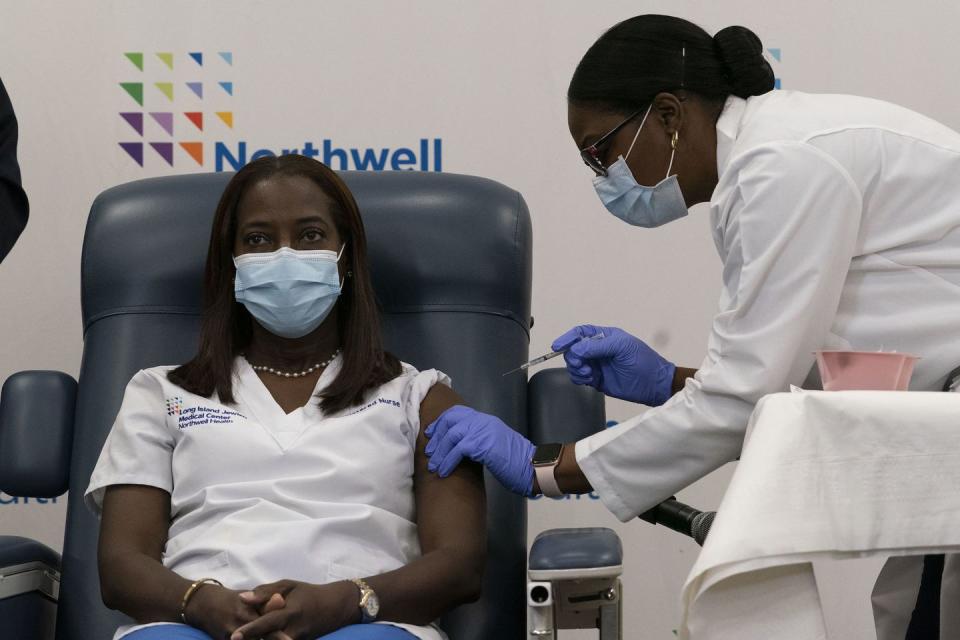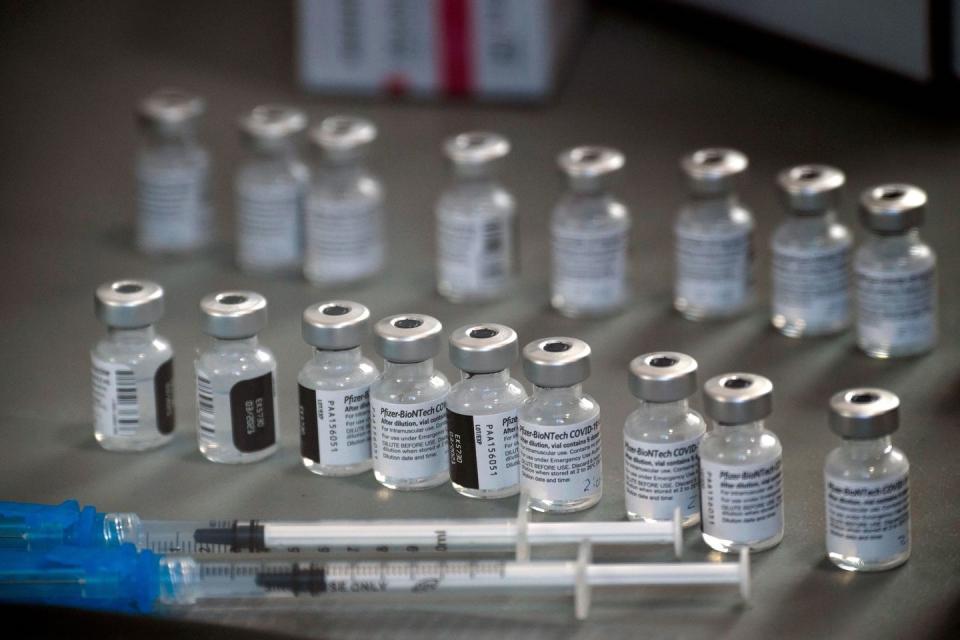We Need to Prepare for the Possibility That Something Good Might Happen

Over the last year—make that five—it has become customary to note that everything will only get worse. Pandemic life has been interrupted mostly by natural disasters exacerbated by the growing climate crisis or political leaders engaging in shameless and destructive behavior. The cases and the hospitalizations and the death toll continually grew worse. Small and medium-sized businesses, particularly neighborhood fixtures like restaurants, were shuttered by the thousands, and millions of Americans were thrown into unemployment. New variants of the virus emerged that spread faster, and which experts feared might evade vaccines. It was always safe to assume the downward spiral would continue in perpetuity, except for in the Stonk Market, which only goes up.
Here and now, though, towards the end of the second month of the Year of Our Lord 2021, we may be on the cusp of a number of very good things happening. Are we ready for that? It might seem silly to ask. Surely everyone wants good things to happen. And now that the FDA has announced the Johnson & Johnson vaccine is safe and effective, the good things are even likelier still. The early indications are that the J&J vaccine remains effective against the New Variants, including the South African strain, which have caused so much alarm in the scientific community and especially The Media. The early signs are that it does not just prevent severe infection, but may cut down on transmission of the virus. Plus, the J&J formula is a one-shot deal, meaning the doses manufactured will go far towards getting the population immunized.
All this positivity is not actually out of step with other recent news. The research on the Pfizer/BioNTech and Moderna vaccines also indicates they retain strong effectiveness against variants like the London strain. And while folks in the scientific community have been reluctant to say so until the data comes in, there's long been reason to believe that the vaccines will make a significant dent in transmission of the virus. The implications of that are huge: if getting vaccinated does not just stop you getting severe COVID, but limits how much it spreads, widespread vaccination should truly allow us to get back to something approaching our normal lives. The early data out of Israel, which has led the way on getting shots in arms, is extremely promising: the Pfizer shot is 98.8 percent effective at preventing deaths and hospitalizations, and has stopped 89.4 percent of transmission. If this pans out in larger data samples, and with respect to the two other formulas, these vaccines are nothing less than a miracle. It would mean we are likely nearing the end.

Yet this is not really the message you can take away from a lot of the media coverage. A Los Angeles Times article ran on Monday with the headline, "California's coronavirus strain looks increasingly dangerous: 'The devil is already here.'" The story finds that, like the London and South African and Brazilian strains, the California strain is more infectious than the OG variant, and it "also evades antibodies generated by COVID-19 vaccines or prior infection." But if you get most of the way down the text, you'll find this:
In the lab, the California strain also revealed itself to be more resistant to neutralizing antibodies generated in response to COVID-19 vaccines as well as by a previous coronavirus infection.
Compared with existing variants, the reduction in protection was “moderate ... but significant,” the researchers said.
The reduction was moderate. Meaning vaccines will likely remain effective, if somewhat less so, against this California variant. It sounds promising that if we keep vaccinating people, and step up the pace, we can get out of this. Yet the headline suggests the Devil Himself has come to drag us all to Hell.
Two days before the Israeli transmission news dropped on Sunday, "The Daily," the prestigious New York Times podcast with a mammoth following, dropped an episode with Apoorva Mandavilli, a Times reporter covering the pandemic. She joined host Michael Barbaro primarily to discuss when children will get vaccinated. But the episode also contained a whole lot of discussion about adults that reflected the kind of doomsaying that has become highly common in media coverage of the pandemic. It's not just that things have been bad. There apparently isn't much reason to think things will get better anytime soon.
"There’s no evidence that vaccines prevent you from carrying the virus," Mandavilli said, later referencing "that little loophole where even if you’re vaccinated you can still transmit." But again, even before the Israeli data came in, the speculative weight fell much more on the side of vaccines denting transmission than having no or negligible effects. Another Times reporter, David Leonhardt, was clear on this the same day The Daily episode dropped. Over and over again, though, media reports on the vaccines have seized on the lack of data on transmission from the vaccine trials—the initial ones just didn't look at it—to leave the reader or viewer with the impression that the vaccines will not affect transmission.

Leonhardt suggested in his piece that this could be harming people's uptake of the vaccine, on the basis of, "What's the point?" It's certainly sapping people of their hope. If it's not going to change our lives, why even try? Elsewhere in the episode, Mandavilli seemed to warn against fully vaccinated grandparents hugging their grandkids without a mask. Again, we're forced to ask, What is the point? At what point does this kind of risk assessment become totally out of whack? The current CDC guidance, again trumpeted in news reports, is that two fully vaccinated people should not hang out together. Maybe that caution is warranted until a bigger chunk of the population has been vaccinated, but when will it change?
Elsewhere in the episode, there was discussion of the New Strains, one of which—the London variant—is expected to become the dominant one in the United States by late next month. "We could and we probably will see an increase in cases again," Mandavilli said. "And the other thing we should remember is, a lot of the most susceptible people in the population will be vaccinated. So we may see a big rise in cases, but not necessarily a big rise in hospitalizations or deaths."
Barbaro wound up in response. "You are describing, potentially, A NEW WAVE."
Here, Mandavilli has a much more reasonable take on things. If we significantly cut back on the people who will get very sick or die, having more cases is not the same thing it once was. Because the most likely scenario is that COVID never fully disappears. A Washington Post article this month discussed the likelihood that "over the long term, the novel coronavirus will become a persistent disease threat, albeit one that could eventually end up closer to the flu or the common cold." Later, it explained that, despite the news that the AstraZeneca vaccine did not fully prevent mild or moderate cases of the South African variant, "the crisis phase of the pandemic will recede. A world with the novel coronavirus will feel markedly different as the threat of death or hospitalization diminishes—even if the possibility of a few days of sore throat, cough and fever remains."

It's possible, as always, that everything may get worse again. A new variant still undiscovered may fuck everything up. But the evidence right now simply does not point in that direction. It points to things getting better, and soon, and more people should be aware of this. They should know that if they and the people around them get the vaccine, of which there are soon going to be a lot more doses, we very likely can get back to our lives, living with this each year like we do with the flu. The comparisons between the two in the beginning of all this were wrong and dangerous, but the vaccines present the possibility we can use the tools of human ingenuity to make COVID more like the flu. And maybe if we keep wearing masks on public transportation each year during peak season, we can cut down on both. The coverage should emphasize that the threat remains, but that if we get a lot of people vaccinated quickly, we can get out of this.
Why so much of it does not reflect this is a more difficult question. There is the basic issue that good news doesn't make for good news. Bad stuff makes better headlines. There is less coverage, for instance, of falling cases than rising cases. But it might be time for many of us to assess whether we've developed a kind of Stockholm Syndrome relationship with negative information. Are we addicted to bad news? After so many days and weeks and months of being bombarded with it day after day, have our brains developed a need or expectation that it will consistently arrive? Do things feel weird or uncomfortable without it? In short, as we asked above, are we ready to acknowledge the possibility that good things might happen, and soon?
You Might Also Like

